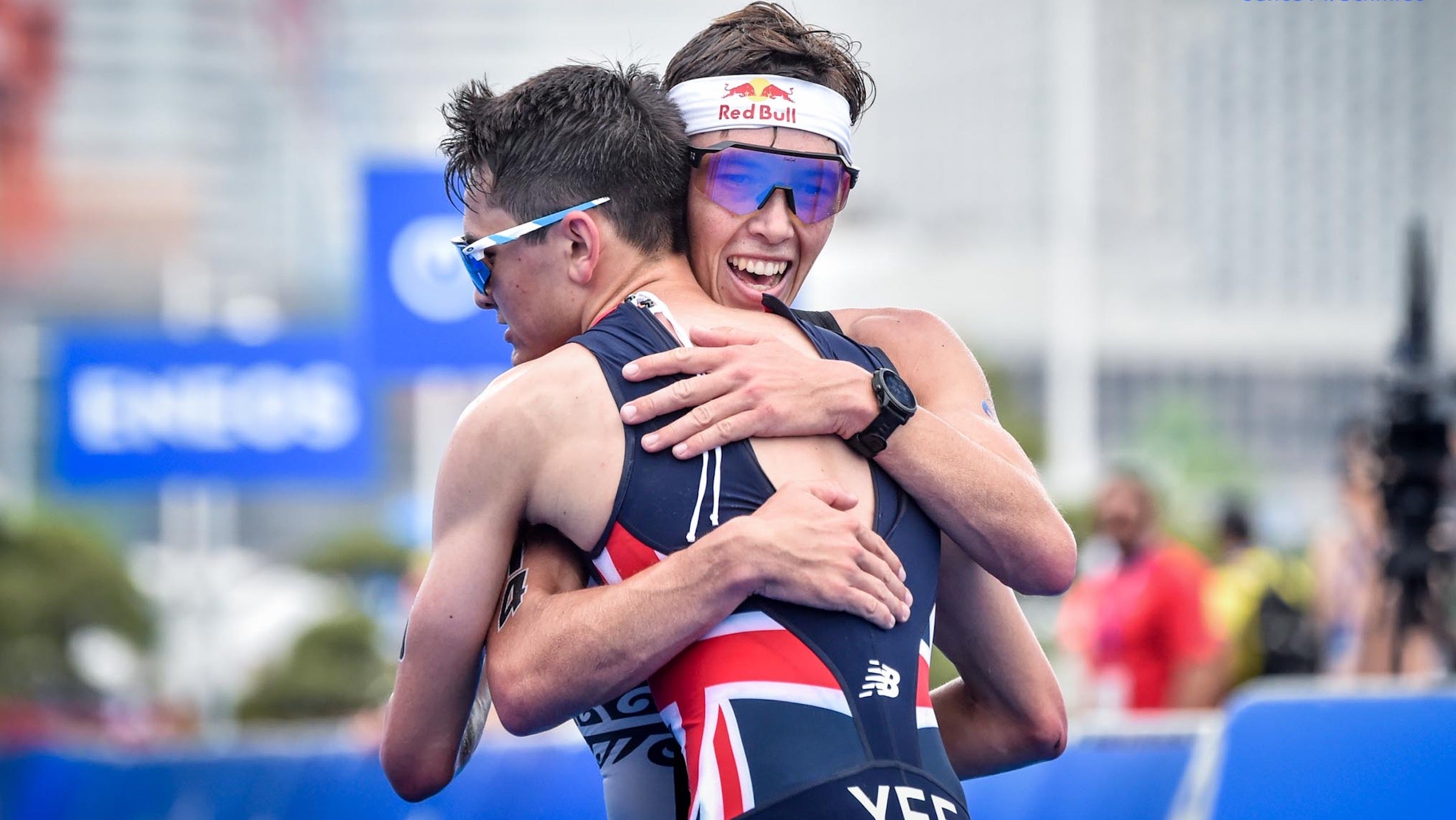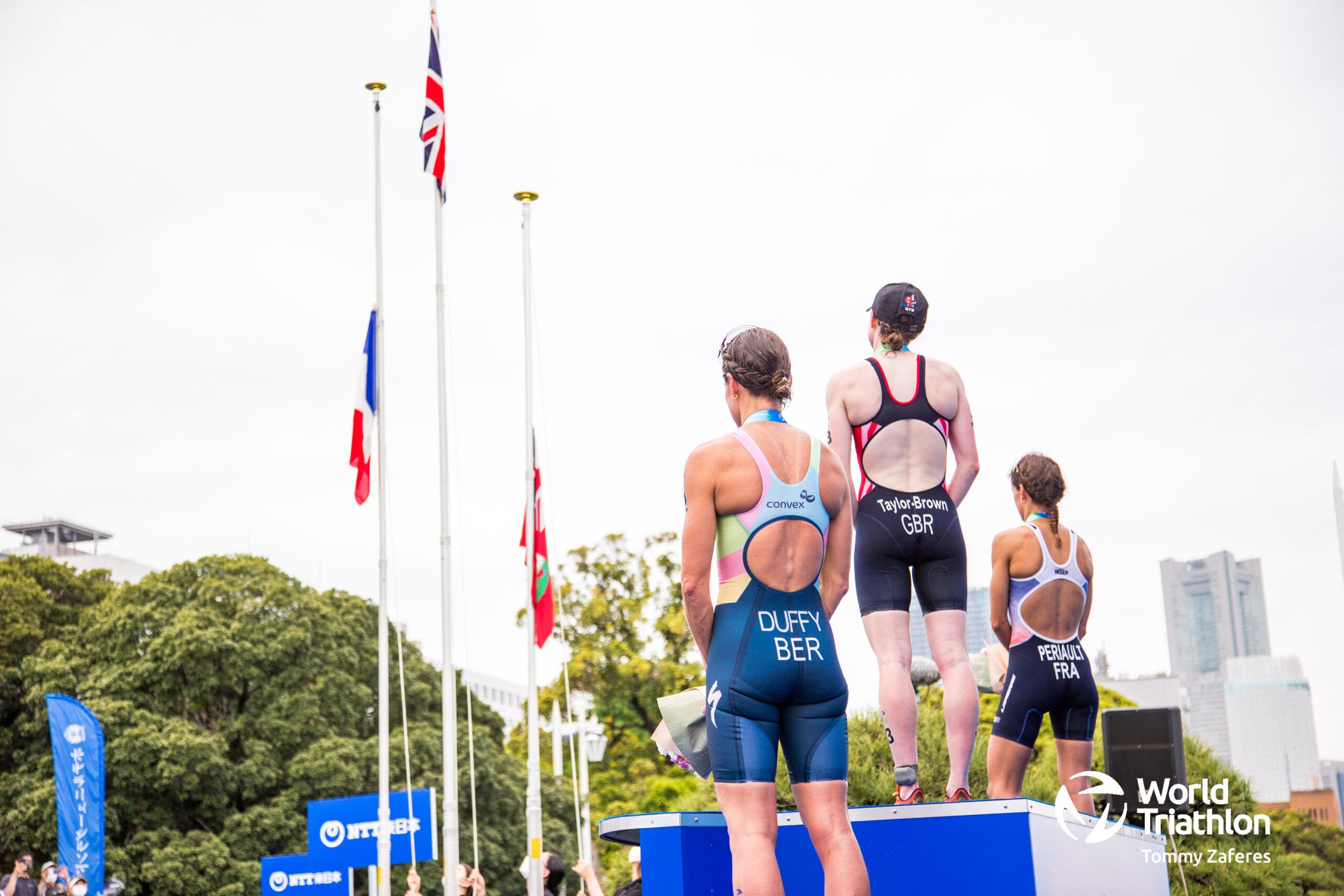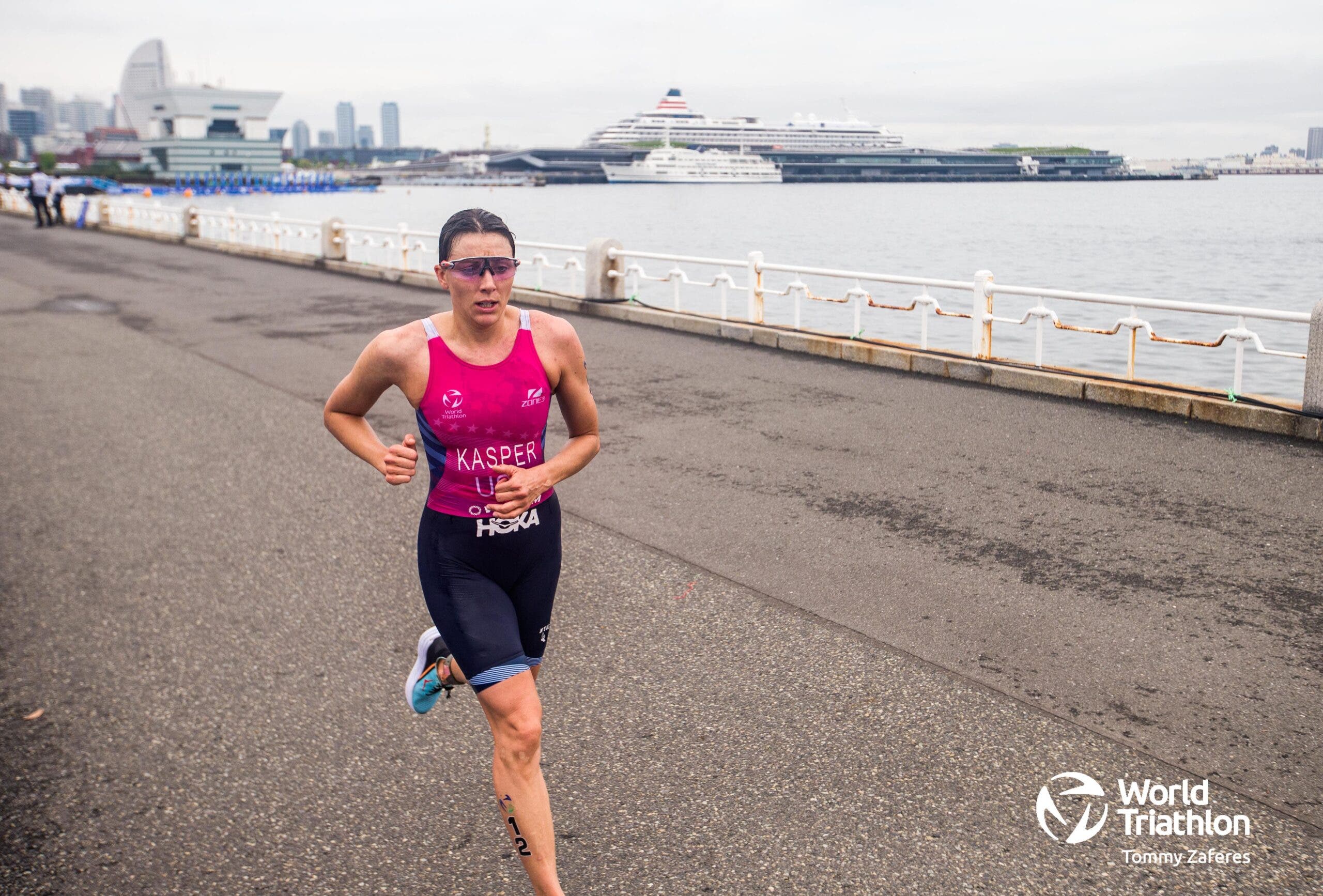Last Weekend Now: The WTCS is Back, and Something Happened on the Streets of LA

(Photo: Janos Schmidt/World Triathlon)
Last Weekend Now is your Monday rundown of what’s happening in pro triathlon, brought to you with commentary by Brad Culp. (Ed note: So yell at him if you don’t like the comments.)
The greatest show in triathlon is back with the return of the World Triathlon Championship Series. Some of you read that sentence and are thinking, “But Brad, Super League is even more electric than WTCS and you know that.” And you might be right—sometimes—but World Triathlon racing is about more than the prize purse and make believe teams. It’s about country, world titles, and medals, and that’s why it brings out the best racing year after year. In my opinion, humble or otherwise.
Two weeks ago we saw a handful of the world’s top short-course athletes compete in the Zwift Super League Arena Games in Singapore, where a few of the British athletes shined. Last weekend nearly all of those athletes were in Yokohama to kick off the two-year push to Paris 2024, and once again, it was mostly about the Brits. Over on this side of the world, the PTO debuted their “Pro Am” series. And it was—something.

World Triathlon Championship Series Yokohama
Let’s start with the elephant in the room: The new Team USA kits. Social media seemed very divided on whether or not hot pink is an appropriate color for the upper portion a USA kit. Many were quick to point out that America’s traditional colors are red, white, and blue, as if we’d ever let the world forget that.
I think the new kits are absolute fire, and I talked to two Team USA athletes who absolutely love them, and that’s a representative sample size when you’re talking about like a dozen athletes total. Best of all, the kits pop in races where kits typically don’t pop, so it’s easy to pick out the U.S. athletes on the coverage and see how far they are behind the Brits.

About those Brits: Let’s start with Georgia Taylor-Brown, because I actually watched the women’s race live because it actually took place before my bed time on Friday night. It was one of the most assertive races we’ve seen from GTB, who was coming off a third-place showing at those Arena Games.
A 10K run is much more her style, so much so that she gapped the field twice: Once immediately after leaving T2, and once again after Olympic champion Flora Duffy pulled a select group of five back to her midway through the run. It was the most we’ve seen Duffy suffer in recent memory, who finished third for her effort, but remains atop the series standings thanks to winning last November in Abu Dhabi (which was the second race to count toward the 2022 season; the oft-forgotten Hamburg being the first).
Wedged between Taylor-Brown in first and Duffy in third was Frenchwoman Leonie Periault—a name you may not be as familiar with, but you really should, given that she finished fifth at the Olympics and has been on ever since. She has not finished outside of the top five at a World Triathlon race in the past 12 months, but has yet to win at the WTCS or World Cup level. Expect that to change sooner rather than later.
The men’s race was very similar to the women’s in that a fleet-footed Brit took the win over a French person and someone from an island nation. Olympic silver medalist Alex Yee and bronze medalist Hayden Wilde were in a league of their own on the run, and it took nearly all of 10 kilometers to find out who was better.
Spoiler alert: It’s still Yee, and the rest of the world is going to have a very hard time figuring out how to beat him now that sub-29-minute 10Ks are become routine for him. He (and Wilde) even managed to bridge a gap early in the bike after they both swam 30 seconds slower than the French guys who are always drilling the swim. They even had time for this heart-warming moment:
One of those Frenchmen was Léo Bergere, who ran his way to the final podium spot, but was still 37 seconds slower than Yee on the run. Like Periault, Bergere is always in the mix but never atop the podium. He’s finished in the top 10 in eight of his last 10 races, including four trips to the podium, but zero wins.
The World Triathlon Championship Series is on a nearly one-month break and will resume June 11-12 in Leeds, England.
Herbalife/PTO Pro-Am
It’s not uncommon for me to have triathlon on the TV on a Sunday afternoon, provided there’s one with actual coverage. We had just that yesterday with the debut of the Professional Triathlon Organization’s Pro-Am series, which was part of the Herbalife 24 Los Angeles Triathlon, which is version 2.0 of the race formerly known as the L.A. Tri (but they don’t like it when you call it that).
It’s a fantastic event, and my favorite urban triathlon on earth, but I’m one of those weirdos who absolutely loves everything about L.A. (aside from when it catches on fire). I was excited to watch a race in one of my favorite places on a channel I happily pay extra for it (BeIn Sports, you should too). As is often the case when triathlon is playing on the TV in the background, my wife will half pay attention and make fun of the athletes’ “costumes.”
She was particularly interested in this one, because, like me, she’s weird and absolutely loves everything about L.A. (aside from when it catches fire). She often has questions and opinions about what kind of triathlon is taking place, and let me tell you, there were some questions and opinions about this one.
“So it’s a relay?”
“Yup.”
“The one in the Olympics was way better.”
“Uh huh.”
“These are pros?”
“Just the ones doing the bike.”
“Is there prize money?”
“Not for this, but there’s another race happening at the same time on the same course with a bunch of money for pros. Andrew [Starykowicz] is racing.”
“Is he going to win?”
“Not a chance.”
“I don’t get it.”
“Thanks, I’ll be sure to mention that in my column.”
If the PTO’s goal with their Pro-Am series is to bring triathlon to new audiences, I’m not sure this format is the best way to do it. Triathlon is an inherently difficult sport to translate to people who don’t have a background in endurance sports. Making competitive exercise less competitive doesn’t exactly make for a compelling broadcast.
I applaud the “bringing people together” component of a Pro-Am event, especially since PTO made it clear they wanted to elevate the profiles of the Challenged Athletes Foundation athletes, who did the swim portion of the relay, as well as a few of the runs. The bike legs were all done by pro triathletes, and the run was a smorgasbord of amateur triathletes, CAF athletes, and D-list celebrities.
Lionel Sanders’ team won, in case you were interested. I think by quite a bit. Haven Shepherd, an Endeavor Games silver medalist, handed things off to Sanders, who dusted everyone on the streets of downtown L.A., before passing the baton to former UFC fighter Paul Felder.
I think a better way to do it would be to do what Clash did for its Pro-Am: Have the pros swim, and do it over the sprint distance. Hollywood was the right place to put on a “celebrity” event, but you’re much more likely to get the stars to come out to bike 20K or run a 5K. A 10K run on a grueling course will not draw in the likes of Jennifer Lopez or Will Ferrell or whatever influencer is hot these days.
Format aside, from a production-quality standpoint, it was a nice broadcast. Great camerawork, decent commentary—all that stuff that every race producer except World Triathlon has struggled with for years. And I watched it on my actual TV. No app or stream needed. PTO is doing an excellent job of bringing in new broadcast partners, which is something the sport has struggled mightily with in the past. We still watch Kona on Facebook. It’s the only reason you still have a Facebook account.
In the real elite race, South African Jamie Riddle topped USA’s Eric Lagerstrom in the men’s race and Brazilian Vittoria Lopes led start-to-finish to beat American Amy Sloan. The PTO put up $100,000 in total prize purse and made sure everyone competing got paid. There was a time when athletes made real bucks for Olympic-distance non-draft racing in the U.S. It’s great to see PTO trying to bring that back from the dead. The next PTO event is the Canadian Open in Edmonton at the end of July.
Watch the PTO events here; Outside+ members have access to the replays.